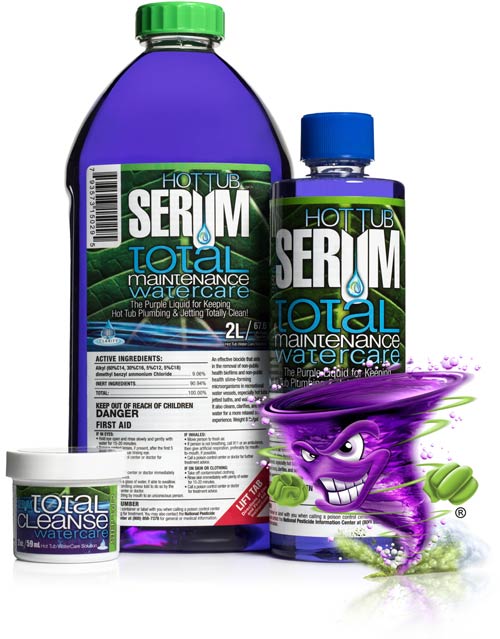When you think about it, you realize that most of the time your hot tub is “resting” or waiting for you to use it. Even it you use your spa a ½ hour every day of the week, your spa is resting 98% of the time. What’s happening in this time?
Spa Operation
Primarily three things are occurring in your spa when you are not using it.
- On a regular basis your spa will go into “filtration mode” to circulate spa water through your filter(s) and remove very small particulates in the spa water that otherwise would make your spa water appear cloudy. Some spas will use a separate, small, dedicated pump for filtration while others will use the Low Speed on the #1 Jet Pump. Also, some spas have 24-hour filtration, but all will go into this filtration mode at least twice a day.
- Also, on a regular basis which, depending on your settings, will be as little as twice a day or as much as every ½ hour, your spa will check the water temperature. If needed, your spa will also turn on the heater while in filtration mode.
- Your spa sanitation regimen is killing pathogens, including bacteria, viruses, & molds, and removing all forms of biologic waste that are introduced to your spa with your use. Some components of the regimen may include primary sanitizers (such as chlorine, bromine, metallic ions – usually silver, & biguanide), ozone, UV light, enzymes, and non-chlorine shock (potassium monopersulfate).
A critical issue however is this. None of these are always working at peak performance in your spa.
Bromine Floater
Let’s start with the simplest sanitizing regime; a bromine floater. Brom Tabs will dissolve in approximately 7 – 10 days. If you forget to refill their floater before their Brom Tabs are gone and your spa is then unprotected?
Silver Ion Sanitation
How about the various ion-based systems? The in-line versions seem great, but we remember the adage, “Out of sight, out of mind”. How often might you forget to replace the bromine, chlorine, and/or silver ion cartridge before they are empty? These systems also suggest a replacement frequency, but how often are the cartridges empty before the period ends? If they are empty, your spa has no primary sanitizer available to kill bacteria, viruses, etc.
UV & Enzyme
UV and enzyme systems require the frequent addition of a halogen, typically chlorine, as a sanitizer since they do not kill bacteria. It’s all too easy to forget to add chlorine as needed.
Salt Systems
Salt Systems offer some protection from the above issues, but their electrodes need to be replaced and the system will become ineffective if Calcium scaling occurs.
Additionally, they operate by slowly converting salt to either chlorine or bromine, hence they do not respond quickly with additional sanitizer when you suddenly increase the sanitation load (what the industry calls bather load) by, for instance, inviting your friends or family over Sat. night to enjoy a good soak.
Chlorine
In addition to these issues, chlorine has its own issues. It becomes increasingly less effective in killing bacteria, viruses, etc. as pH rises.
One form of chlorine is dichlor, which many manufacturers and dealers recommend as it’s the most common sanitizer in pools. Dichlor is nearly 50% cyanuric acid (CYA). CYA is needed in pools but it actually reduces the ability of chlorine to kill bacteria.
SERUM Total Maintenance is the Solution
Total Maintenance has many benefits for a spa but one of its key purposes in your spa sanitation regimen is as a back-up, secondary sanitizer. And, it is not affected by pH levels or cyanuric acid. It always works. One ounce for every 100 gallons of your spa water, added once a week ensures you maintain crystal clear, safe spa water. Total Maintenance ensures you can enjoy your spa ownership experience whenever you wish!
Thanks for reading,
Tony Turbo






